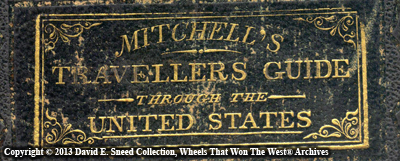Increasingly, that pursuit of the lost has become mypassion in this hobby-turned-obsession. Where are the real 19th century legends? How do we recognize them after the obvious markings are gone? How do we truly know the difference betweenheavy vehicles from the 1800’s and those from the 1900’s? Why is one piece more significant thananother? What resources are the mosthelpful? Some of these questions havebeen answered in our blogs, articles, books, or even presentations given toorganizations throughout the U.S. Gradually, we’ve been successful with enough discoveries (information aswell as artifacts) that this 19th century world of wagons and western wheels is becomingfamiliar to many more. Just asimportantly, the answers to each of these questions continually lead us to morediscoveries.
This posting marks my 100th weeklyblog. Each of the writings mirrors acommitment to locate, share, preserve, and promote significant parts ofAmerica’s western vehicle past. Morethan an idle pastime, it’s a privilege to play a small role in preserving suchan enormous legacy. After all, these arethe roads - the direct connections if you will - to some of the most dramatichistory that shaped our nation. From thestart, there were wheels; wheels of risk, wheels of reward, and mostimportantly, wheels of hope; big wheels with even bigger plans and the biggestof dreams. Together, they conqueredmountains, rivers, deserts, weather, and even time. While our Wheels That Won The West® archivescontain listings for tens of thousands of makers scattered throughout the U.S.,we will likely never know all of the early vehicle builders. That said, we do know the vast majority ofthe major players. They are the brandsthat stood out on the frontier. Oftenpushed to the brink, they were bastions of strength and icons ofopportunity.
This week, our archives will again be tested as wesearch for even more answers and lost history. Once more, we’ll be in the field looking for remnants of Murphy,Espenschied, Caldwell, Jackson and others. As prominent western vehicle brands, they’re given minimal attention bymost folks today, but they were once highly prized on the Americanfrontier. After two decades of dailypursuit, we’ve learned a lot. The mostimportant lesson has been that every clue in this hunt for history is vital. Each trace of evidence fills part of amassive puzzle, ultimately leading to more discoveries while building astronger understanding of America’s first transportation industry.
Whether it’s the recent finding of yet another veryearly Studebaker wagon paint pattern or the chance uncovering of previouslyunknown freight wagon, sheep camp wagon, and army wagon specifications, it’sclear that significant remnants are still waiting to be found. Through it all, a persistent focus andconstant resolve has continued to open roads of opportunity – just the way itwas done centuries ago when a young nation was determined to head west.


